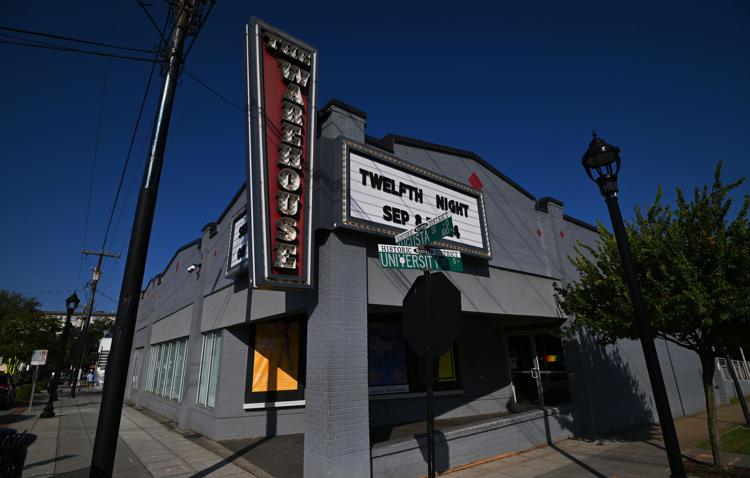This Post and Courier article by Spencer Donovan was originally published on September 7th, 2023. Photo: Tim Kimzey
GREENVILLE — In 1974, a theater professor, an arts advocate and a young actor climbed the stairs of a building behind the Greenville Memorial Auditorium to inspect a space where they might perform plays for the community.
When they reached the top, the trio — Peter Smith of Furman University, Jim Boivin of the Metropolitan Arts Council, and then-recent Clemson grad BJ Koonce — saw a storage room with exposed ceilings and concrete walls. It could work, they thought.
Smith and Boivin wanted to produce shows you couldn’t see anywhere else in town: reimagined classics from Shakespeare and edgy, socially conscious productions from off-Broadway. They didn’t know if the Greenville community had the appetite for those types of performances, but they wanted to try.
The auditorium’s longtime manager, Leslie Timms, said he would lease the room for free that summer as long as they maintained the space. Smith accepted his offer.
Over the next 49 years, The Warehouse Theatre tumbled out of its cramped birthplace to a modern corner space in the now-revitalized West End neighborhood, all the while transforming an aspiration into a cornerstone of the Greenville arts community.
Celebrating half a century with new season

The Warehouse will open its 50th season Sept. 8 with a mosaic of productions, including a musical about presidential assassins, an odd-couple story centering on Gen Z women, and an Alice Childress play about racism and sexism in American theater.
“These shows you can only find at the Warehouse. They’re not online streaming,” said Mike Sablone, producing artistic director since 2017. “Even with Shakespeare, we’re doing it in a highly theatrical way that … you can only have an experience in a live theater with your community.”
That aligns with the original purpose of the Warehouse’s founders, who hoped to provide a place to see shows you couldn’t see anywhere else in the city.
But Greenville was different back then.
‘There was almost nothing to do’
When the founders of the Warehouse took on the idea of a home for alternative theater, Main Street wasn’t the photogenic strip it was today. It was a four-lane road where high schoolers would go cruising on Friday nights.
Greenville had a couple of movie theaters and a few decent places to eat, but nowhere near the plethora of restaurants today that put the city on lists of top travel destinations. Fluor Field didn’t exist, and the iconic Reedy River Falls in Falls Park was covered by a monolithic concrete bridge for vehicles.
“There was almost nothing to do, and that’s why I think we were lucky in that regard because we were the only game in town, really, other than the (Greenville) Little Theatre,” Smith said.

That original performance group, now known as the Greenville Theatre, often performed major Broadway musicals. But Smith wanted to produce off-Broadway shows that would otherwise have required a trip to New York City.
The sprawling Peace Center that now hosts traveling off-Broadway shows wouldn’t come until 1990.
The theater world was in the midst of a social and political revolution that grew out of the cultural upheaval of the mid-20th century, but there weren’t many regional theaters to produce those shows after they closed in New York.
Smith, who moved from Cleveland, Ohio, to teach theater at Furman University, thought there might just be a lot of people in Greenville interested in performances from the alternative theater movement.
After they acquired the space behind Greenville Memorial Auditorium — which, unlike the name implies, served as a multi-purpose arena — Smith and the others decided to hold an interest meeting.
They advertised the meeting in the local newspapers for a Sunday afternoon in March 1974. Smith expected a handful of people to attend, most of them probably his college students.
Instead, more than 100 people showed up.
“I just couldn’t believe it,” Smith said. “I didn’t know who these people were. I had no idea because I was new to Greenville. I had only been there a year, and eventually most of those folks were the beginning people who did the dirty work: building, painting, everything.”

Although downtown Greenville was sleepy, the town underwent a swell of investment in the arts in the 1960s and 70s, particularly from local business owners, Koonce said.
The Metropolitan Arts Council started in 1973, with Boivin as its first president. The Fine Arts Center opened in 1974 as the first arts high school in the state. Arthur McGill purchased paintings by Andrew Wyeth in the late 1970s and lent them to the Greenville County Art Museum, which had moved to Heritage Green with the Greenville Theatre.
In June 1974, the Warehouse performed its first show, “Dark of the Moon,” a play about a “witch boy” from the Appalachian Mountains who falls in love with a mortal woman.
That summer season, they produced two more shows. At the end of the season, they formed a board and started paying a modest fee to stay in the annex building.
A place for something different
In those early days, the Warehouse was run solely by volunteers, besides Smith, whose job as artistic director was funded by a grant from the South Carolina Arts Commission. Most of the costumes came from actors’ closets, and sets were built with donated lumber.
The emphasis was on the broader theater community, said Koonce, who served as the original board secretary and later as president from 1998-1999. Productions were a “group effort.”
“I did some directing, acting, whatever was needed … No job was too big, or no job was too small. You just jumped in and helped,” Koonce said.
The only funding source was the income from shows, Smith said, which occasionally drew ire from the conservatives in town.
The Warehouse performed rock shows based on Christian themes like “Godspell” and “Jesus Christ Superstar.” They performed “For Colored Girls Who Have Considered Suicide/When the Rainbow is Enuf” by Ntozake Shange, which told stories of Black womanhood, and “The Boys in the Band,” a play featuring gay men living in New York City.
That last show drew picketers outside the building.

“In those days, you just did not, at all, try to put something like that in front of anybody, and it was a non-starter,” Smith said. “There was no real sense of forward thinking in those days.”
For a venue the size of the Greenville Theatre, Smith said putting on controversial plays could put a company in a risky financial situation, but the Warehouse was so small, it wouldn’t have mattered.
Ultimately, Smith said he chose these shows for their quality, not just for their messages.
“So the question really to me is: Are you running a political theater, or are you gonna run an entertainment theater, or can you find a way to do both simultaneously, and the audience … is unaware of it, that that’s what you’re doing, that you’re actually making a political statement, but they are so wrapped up in music and everything about it, the play, they don’t realize that until they go, ‘Woah,’” Smith said.
Smith, who lives in Chattanooga, left the Warehouse in August 1982 to take a faculty position at the University of the South in Sewanee, Tenn. But he thought the Warehouse could carry on because of the lessons they learned in frugality and commitment to entertainment.

Moving to a new home
Throughout the 1980s, the Warehouse continued to perform in its annex at Greenville Municipal Auditorium. The building served as a holding space for the animals when the rodeo or the circus came to town, so noises could be heard during performances in the loft.
“It got to the point where we tried to schedule shows when the circus or the rodeo wasn’t in town because the smell was really pretty bad,” Koonce said.
In the 1990s, the auditorium complex was demolished to make way for what’s now the Bon Secours Wellness Arena.
The Warehouse performed in various spaces for a few years until its leaders purchased three storefronts at the corner of Augusta and University streets in the West End neighborhood, where it sits today.
The move to the West End wasn’t easy.

The repurposed loft had become a beloved space symbolic of the Warehouse’s roots in the alternative theater movement.
On top of that, the West End was dead, managing director Jason D. Johnson said.
“And so, now, where you got shops all around, and you got traffic all around, you got people on the sidewalk, that didn’t happen back then,” said Johnson, who started as an actor at the Warehouse in the early 2000s. “It was, we were really down here, truly a cornerstone of this place before all of this growth happened around us.”
But the move came with great timing.
Throughout the following years, the city demolished the old vehicle bridge that obscured the iconic Reedy River Falls and replaced it with the pedestrian-only Liberty Bridge. The baseball stadium opened to the public, and businesses began moving into the neighborhood.
That provided more amenities for patrons of the Warehouse, a relationship that benefits both the venue and the places around it.
“A theater is always going to be an economic driver, because people are not just coming to see the show and then leaving,” Sablone said. “They’re doing things around the theater: eating, getting dinner beforehand, getting drinks or coffee or dessert afterwards, paying for parking and doing all of that stuff.”
Classics to the contemporary to now
Today, the West End and surrounding areas continue to grow. The $1 billion Greenville County Square redevelopment has broken ground and will bring housing, retail and office space to a 40-acre property mere minutes from the Warehouse.
The growth could bring more people into that symbiotic relationship for the theater and its surrounding community.
But money still can be hard to come by for a nonprofit theater like the Warehouse, especially after the coronavirus pandemic.
After a down time of one to two years, theaters nationwide have struggled with pulling their audience back to shows, Sablone said, but he is hopeful the Warehouse’s audience will come out in full force for the 50th season.

This season, the Warehouse will host the world premiere of “Odd,” a play by Cammi Stilwell, a Furman University graduate and local playwright. It will be Stilwell’s professional playwriting debut.
Salone commissioned Stilwell, 25, to write the play, an odd-couple story about two women in their 20s, after reading one of her scripts from college.
“It’s important for us to be focused on new work that also can be generated by people in the Upstate … because for me it is really wanting to make sure that we’re involving the community as much as possible,” Sablone said.
When asked where he sees the Warehouse in five to 10 years, Sablone said he wants to continue to grow the audience and artist pool.
He wants to make sure they’re fulfilling their mission: reaching as many students as possible with educational programs, reflecting the community both on and off the stage, and hosting world premieres of plays.
At its inception, the Warehouse operated under the slogan: “from the classics to the contemporary.” Now, its reach has grown in ways that its founders didn’t consider.
But the theme Sablone said represents all seasons still mirrors that motto from 1974: “only at the Warehouse.”




